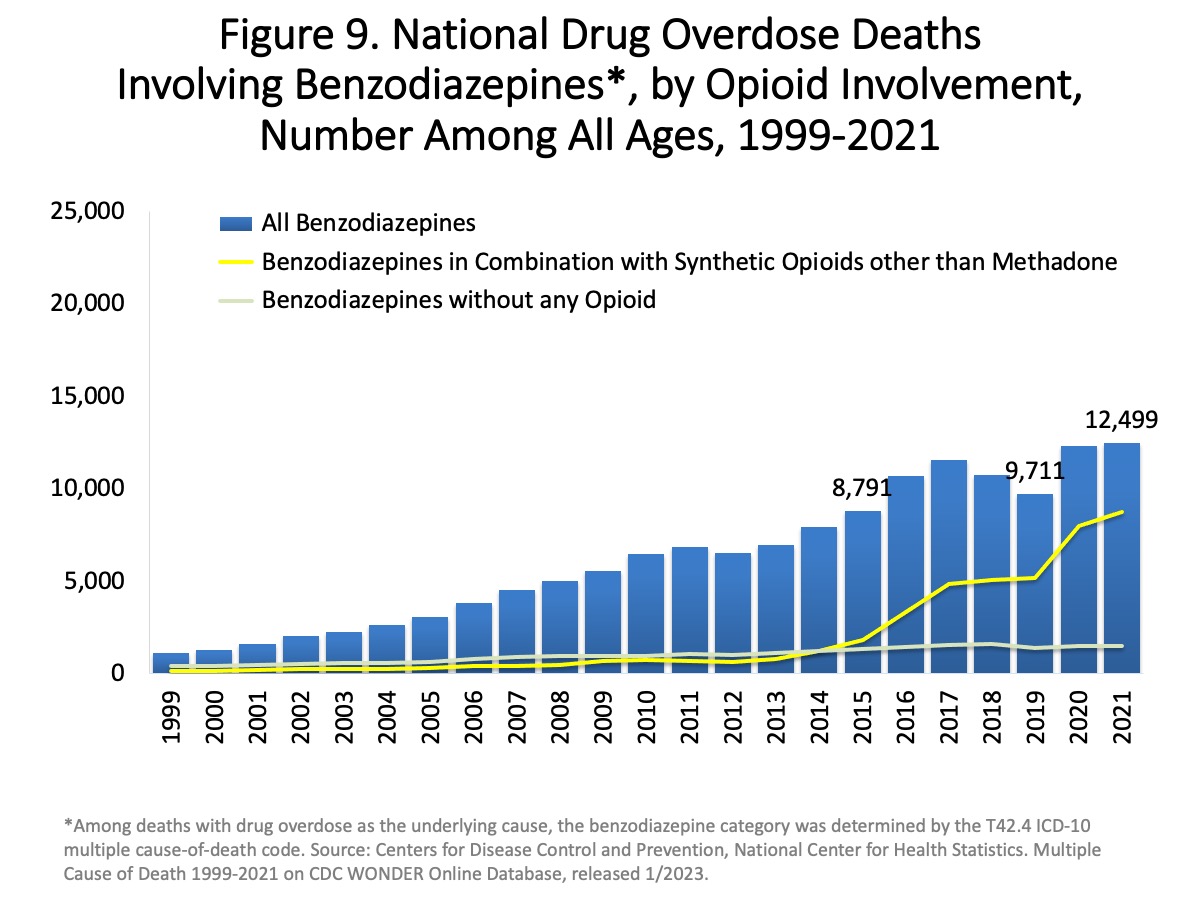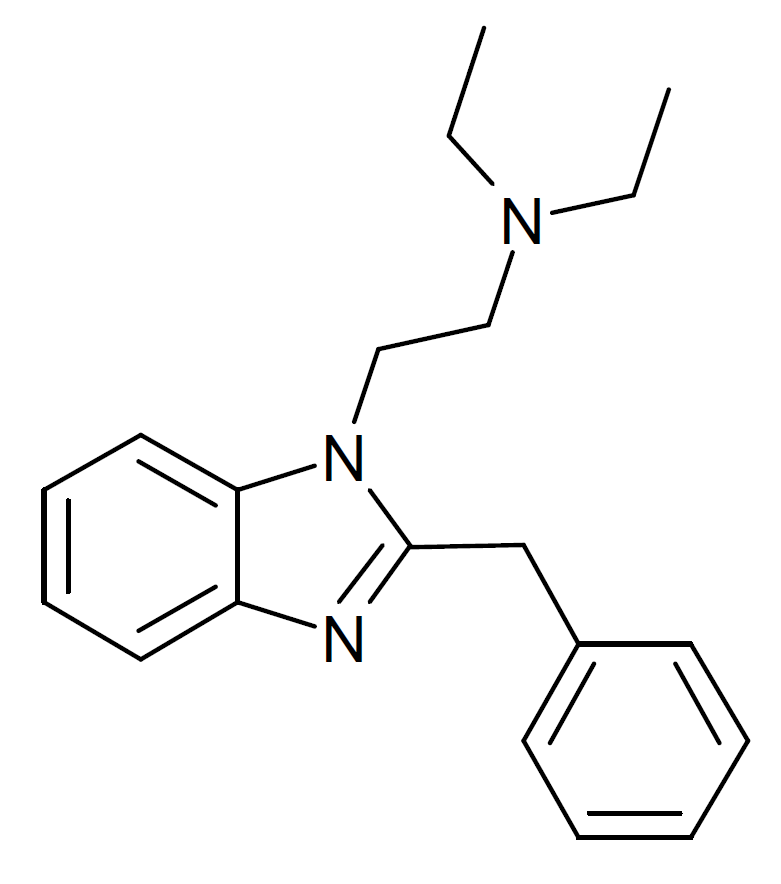|
Secbutonitazene
Secbutonitazene is a benzimidazole derivative which has been sold as a designer drug. It is presumed to have opioid effects similar to related compounds, though its pharmacology has not yet been studied. See also * Butonitazene * Isotonitazene * Protonitazene * List of benzimidazole opioids Benzimidazole opioids, also known as nitazenes, are a class of synthetic opioids with an unusual benzimidazole structure often referred to as opioid New Psychoactive Substances (opioid NPS). First synthesized in the 1950s by CIBA Pharmaceuticals ... References Analgesics Designer drugs Benzimidazole opioids Aromatic ethers Diethylamino compounds Nitroarenes {{Analgesic-stub ... [...More Info...] [...Related Items...] OR: [Wikipedia] [Google] [Baidu] |
Protonitazene
Protonitazene is a benzimidazole derivative with potent opioid effects which has been sold over the internet as a designer drug since 2019, and has been identified in various European countries, as well as Canada, the US and Australia. It has been linked to numerous cases of drug overdose, and is a Schedule I drug in the US. It was developed by a Swiss pharmaceutical company in the 1950s as an alternative to morphine, but was never adopted due to severe side effects. See also * Etonitazene * Isotonitazene * Metonitazene Metonitazene is an analgesic compound related to etonitazene, which was first reported in 1957, and has been shown to have approximately 100 times the potency of morphine by central routes of administration, but if used orally it has been shown ... * Secbutonitazene References Analgesics Designer drugs Benzimidazole opioids Nitroarenes {{Analgesic-stub ... [...More Info...] [...Related Items...] OR: [Wikipedia] [Google] [Baidu] |
Benzimidazole
Benzimidazole is a heterocyclic aromatic organic compound. This bicyclic compound may be viewed as fused rings of the aromatic compounds benzene and imidazole. It is a colorless solid. Preparation Benzimidazole is produced by condensation of o-phenylenediamine with formic acid,. or the equivalent trimethyl orthoformate: :C6H4(NH2)2 + HC(OCH3)3 → C6H4N(NH)CH + 3 CH3OH 2-substituted derivatives are obtained when the condensation is conducted with aldehydes in place of formic acid, followed by oxidation.Robert A. Smiley "Phenylene- and Toluenediamines" in Ullmann's Encyclopedia of Industrial Chemistry 2002, Wiley-VCH, Weinheim. Reactions Benzimidazole is a base: :C6H4N(NH)CH + H+ → 6H4(NH)2CHsup>+ It can also be deprotonated with stronger bases: :C6H4N(NH)CH + LiH → Li 6H4N2CH + H2 The imine can be alkylated and also serves as a ligand in coordination chemistry. The most prominent benzimidazole complex features ''N''-ribosyl-dimethylbenzimidazole as fou ... [...More Info...] [...Related Items...] OR: [Wikipedia] [Google] [Baidu] |
Designer Drug
A designer drug is a structural or functional analog of a controlled substance that has been designed to mimic the pharmacological effects of the original drug, while avoiding classification as illegal and/or detection in standard drug tests. Designer drugs include psychoactive substances that have been designated by the European Union as new psychoactive substances (NPS) as well as analogs of performance-enhancing drugs such as designer steroids. Some of these were originally synthesized by academic or industrial researchers in an effort to discover more potent derivatives with fewer side effects, and shorter duration (and possibly also because it is easier to apply for patents for new molecules) and were later co-opted for recreational use. Other designer drugs were prepared for the first time in clandestine laboratories. Because the efficacy and safety of these substances have not been thoroughly evaluated in animal and human trials, the use of some of these drugs may result i ... [...More Info...] [...Related Items...] OR: [Wikipedia] [Google] [Baidu] |
Opioid
Opioids are substances that act on opioid receptors to produce morphine-like effects. Medically they are primarily used for pain relief, including anesthesia. Other medical uses include suppression of diarrhea, replacement therapy for opioid use disorder, reversing opioid overdose, and suppressing cough. Extremely potent opioids such as carfentanil are approved only for veterinary use. Opioids are also frequently used non-medically for their euphoric effects or to prevent withdrawal. Opioids can cause death and have been used for executions in the United States. Side effects of opioids may include itchiness, sedation, nausea, respiratory depression, constipation, and euphoria. Long-term use can cause tolerance, meaning that increased doses are required to achieve the same effect, and physical dependence, meaning that abruptly discontinuing the drug leads to unpleasant withdrawal symptoms. The euphoria attracts recreational use, and frequent, escalating recreational ... [...More Info...] [...Related Items...] OR: [Wikipedia] [Google] [Baidu] |
Butonitazene
Butonitazene is a benzimidazole derivative with opioid effects, which has been sold over the internet as a designer drug. It has relatively low potency compared to many related compounds, and has generally been encountered as a component of mixtures with other substances rather than in its pure form. However, it is still several times the potency of morphine and has been implicated in several cases of drug overdose. Butonitazene is a Schedule I drug in the US, along with several related compounds. See also * Etonitazene * Isotonitazene * Metonitazene * Protonitazene Protonitazene is a benzimidazole derivative with potent opioid effects which has been sold over the internet as a designer drug since 2019, and has been identified in various European countries, as well as Canada, the US and Australia. It has bee ... References Analgesics Designer drugs Benzimidazole opioids Nitro compounds Ethers Tertiary amines {{Analgesic-stub ... [...More Info...] [...Related Items...] OR: [Wikipedia] [Google] [Baidu] |
Isotonitazene
Isotonitazene is a benzimidazole derived opioid analgesic drug related to etonitazene, which has been sold as a designer drug. It has only around half the potency of etonitazene in animal studies, but it is likely even less potent in humans as was seen with etonitazene (1000 times as potent as morphine in animal models yet only 60 times as potent in humans). Isotonitazene (obtained from an online vendor) was fully characterized in November 2019 in a paper where the authors performed a full analytical structure elucidation in addition to determination of the potency at the μ-opioid receptor using a biological functional assay ''in vitro''. While isotonitazene was not compared directly to morphine in this assay, it was found to be around 2.5 times more potent than hydromorphone and slightly more potent than fentanyl. Side effects Side effects of benzimidazole derived opioids are likely to be similar to those of fentanyl, which include itching, nausea and potentially se ... [...More Info...] [...Related Items...] OR: [Wikipedia] [Google] [Baidu] |
List Of Benzimidazole Opioids
Benzimidazole opioids, also known as nitazenes, are a class of synthetic opioids with an unusual benzimidazole structure often referred to as opioid New Psychoactive Substances (opioid NPS). First synthesized in the 1950s by CIBA Pharmaceuticals as potential analgesic medications, several substances in the class have been identified, the best known being etonitazene Etonitazene is an analgesic drug, first reported in 1957, that has been shown to have approximately 1,000 to 1,500 times the potency of morphine in animals. Because it is characterized by a strong dependency potential and a tendency to produce .... Like other synthetic opioids, benzimidazole opioids bind the mu-opioid receptor and may exhibit potency up to several hundred times that of morphine. While several substances in this class have found applications in research, they have never been used in clinical medicine due to their profound risk of respiratory depression and death, and have recently been recogniz ... [...More Info...] [...Related Items...] OR: [Wikipedia] [Google] [Baidu] |
Analgesics
An analgesic drug, also called simply an analgesic (American English), analgaesic (British English), pain reliever, or painkiller, is any member of the group of Pharmaceutical drug, drugs used to achieve relief from pain (that is, analgesia or pain management). It is typically used to induce cooperation with a medical procedure. Analgesics are conceptually distinct from anesthetics, which temporarily reduce, and in some instances eliminate, sense, sensation, although analgesia and anesthesia are neurophysiologically overlapping and thus various drugs have both analgesic and anesthetic effects. Analgesic choice is also determined by the type of pain: For neuropathic pain, traditional analgesics are less effective, and there is often benefit from classes of drugs that are not normally considered analgesics, such as tricyclic antidepressants and anticonvulsants. Various analgesics, such as many nonsteroidal anti-inflammatory drug, NSAIDs, are available over-the-counter drug, over t ... [...More Info...] [...Related Items...] OR: [Wikipedia] [Google] [Baidu] |
Designer Drugs
A designer drug is a structural or functional analog of a controlled substance that has been designed to mimic the pharmacological effects of the original drug, while avoiding classification as illegal and/or detection in standard drug tests. Designer drugs include psychoactive substances that have been designated by the European Union as new psychoactive substances (NPS) as well as analogs of performance-enhancing drugs such as designer steroids. Some of these were originally synthesized by academic or industrial researchers in an effort to discover more potent derivatives with fewer side effects, and shorter duration (and possibly also because it is easier to apply for patents for new molecules) and were later co-opted for recreational use. Other designer drugs were prepared for the first time in clandestine laboratories. Because the efficacy and safety of these substances have not been thoroughly evaluated in animal and human trials, the use of some of these drugs may result i ... [...More Info...] [...Related Items...] OR: [Wikipedia] [Google] [Baidu] |
Benzimidazole Opioids
Benzimidazole opioids, also known as nitazenes, are a class of synthetic opioids with an unusual benzimidazole structure often referred to as opioid New Psychoactive Substances (opioid NPS). First synthesized in the 1950s by CIBA Pharmaceuticals as potential analgesic medications, several substances in the class have been identified, the best known being etonitazene. Like other synthetic opioids, benzimidazole opioids bind the mu-opioid receptor and may exhibit potency up to several hundred times that of morphine. While several substances in this class have found applications in research, they have never been used in clinical medicine due to their profound risk of respiratory depression and death, and have recently been recognized as emerging drugs of abuse. Isotonitazine was first identified in samples of illicit drugs, and implicated in opioid overdose deaths in Europe, Canada, and the United States beginning in 2019. Previously known nitazene analogs such as metonitazine a ... [...More Info...] [...Related Items...] OR: [Wikipedia] [Google] [Baidu] |
Aromatic Ethers
In chemistry, aromaticity is a chemical property of cyclic ( ring-shaped), ''typically'' planar (flat) molecular structures with pi bonds in resonance (those containing delocalized electrons) that gives increased stability compared to saturated compounds having single bonds, and other geometric or connective non-cyclic arrangements with the same set of atoms. Aromatic rings are very stable and do not break apart easily. Organic compounds that are not aromatic are classified as aliphatic compounds—they might be cyclic, but only aromatic rings have enhanced stability. The term ''aromaticity'' with this meaning is historically related to the concept of having an aroma, but is a distinct property from that meaning. Since the most common aromatic compounds are derivatives of benzene (an aromatic hydrocarbon common in petroleum and its distillates), the word ''aromatic'' occasionally refers informally to benzene derivatives, and so it was first defined. Nevertheless, many non-b ... [...More Info...] [...Related Items...] OR: [Wikipedia] [Google] [Baidu] |





.png)